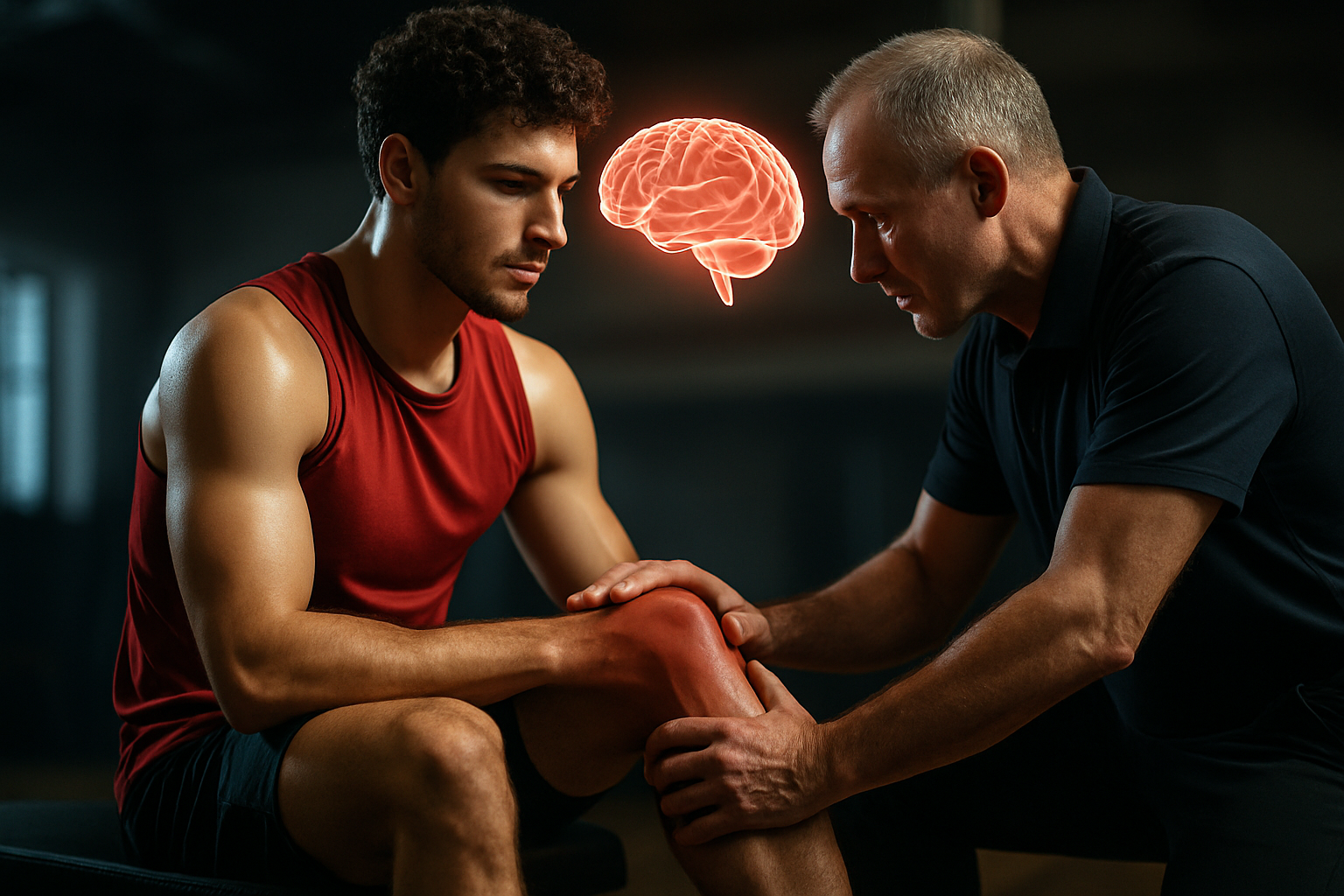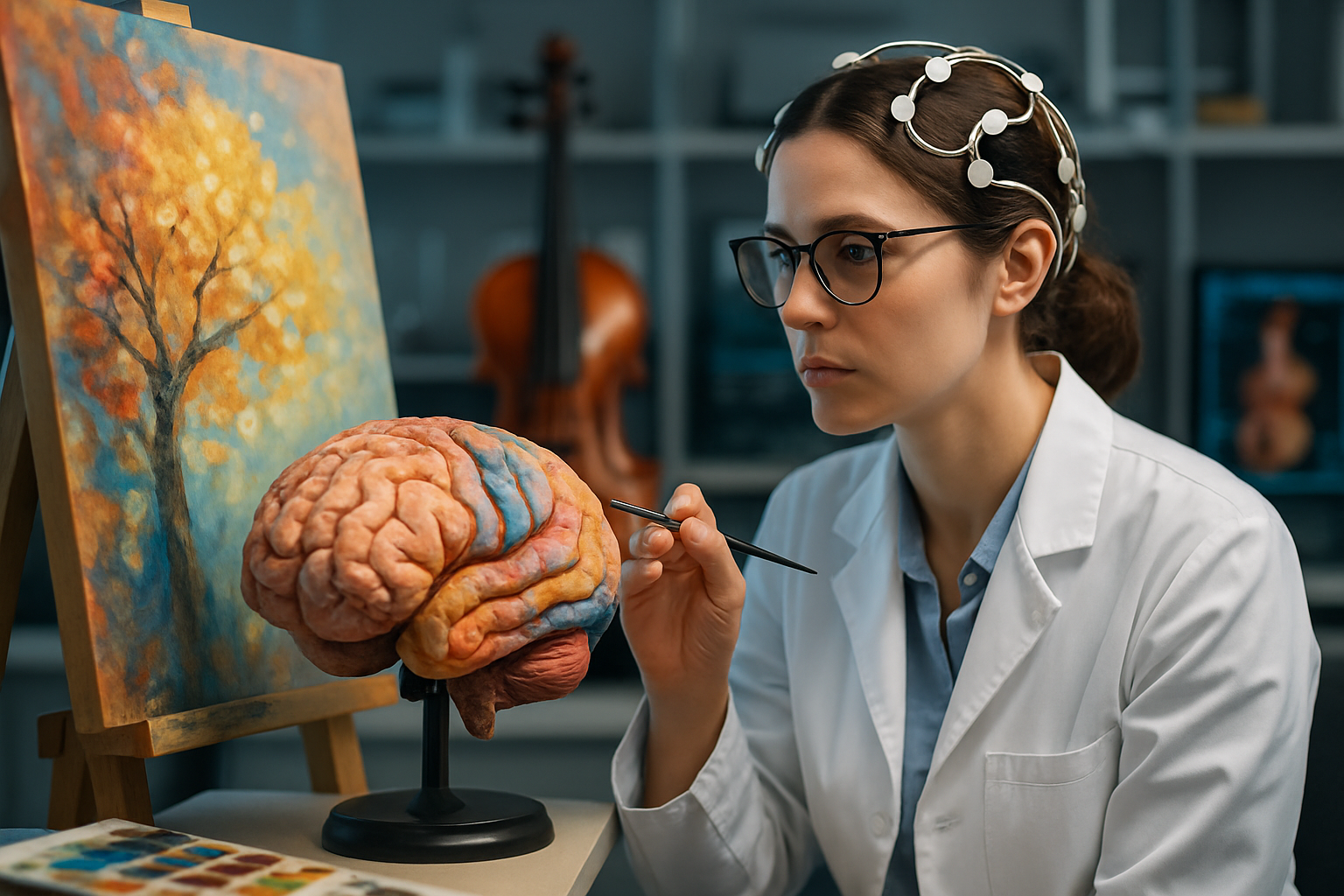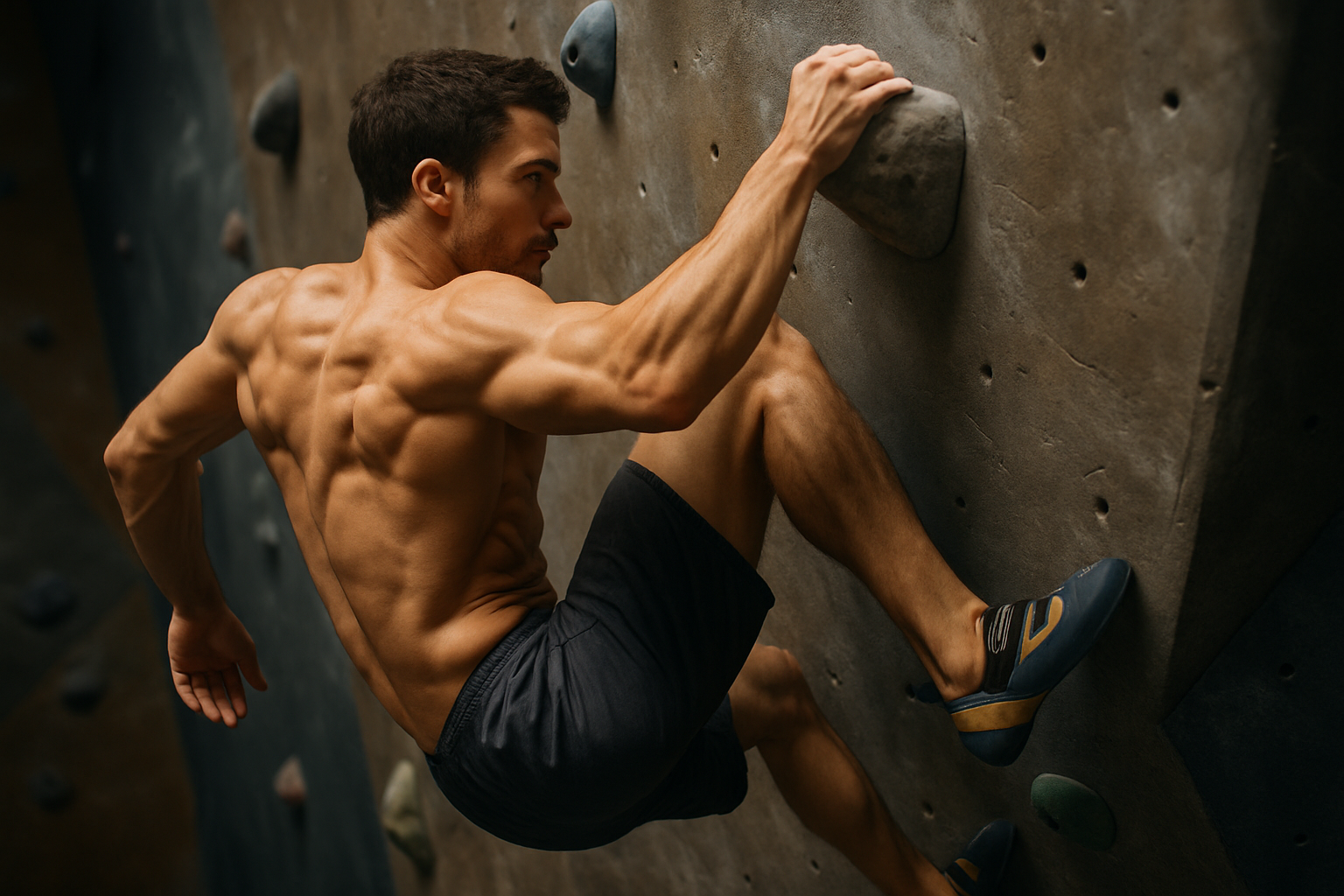Unraveling the Enigma of Muscle Memory in Sports
The intricate dance between mind and muscle, a phenomenon known as muscle memory, has long fascinated athletes, coaches, and sports scientists alike. This remarkable ability of our bodies to recall and execute complex movements with precision and ease is a cornerstone of athletic performance. But what exactly is muscle memory, and how does it shape the world of sports?

The Science Behind Muscle Memory
Muscle memory, contrary to its name, doesn’t actually reside in the muscles themselves. Instead, it’s a complex interplay between the nervous system and the musculoskeletal system. When an athlete repeats a movement consistently, neural pathways in the brain are strengthened, creating a more efficient connection between the brain and the muscles involved in that specific action.
This process, known as neuroplasticity, allows the brain to adapt and reorganize itself in response to repeated stimuli. As these neural pathways become more robust, the execution of the movement becomes more automatic, requiring less conscious effort. This is why experienced athletes often describe feeling as though their bodies are moving on autopilot during peak performances.
Moreover, muscle memory extends beyond just the physical act of movement. It encompasses the entire sensory experience associated with a particular action, including visual cues, proprioception (the body’s sense of position in space), and even emotional states. This holistic memory allows athletes to recreate their best performances by tapping into these multi-sensory recollections.
The Role of Myelin in Skill Acquisition
At the cellular level, muscle memory is closely tied to a substance called myelin. Myelin is a fatty tissue that forms an insulating layer around nerve fibers, allowing electrical impulses to travel more quickly and efficiently along neural pathways. As an athlete practices a specific movement repeatedly, the myelin sheaths around the relevant neural circuits thicken, enhancing the speed and precision of signal transmission.
This process, known as myelination, is crucial for skill acquisition and refinement in sports. The more an athlete practices a particular movement or technique, the more myelin is produced, leading to faster and more accurate execution. This biological adaptation explains why consistent practice over time leads to improved performance and why skills can be maintained even after periods of inactivity.
Research has shown that the myelination process is particularly active during childhood and adolescence, which is why many elite athletes begin their training at a young age. However, the brain retains its ability to produce myelin throughout adulthood, allowing for continued skill development and refinement at any age.
Muscle Memory and Motor Learning in Sports
The concept of muscle memory is intrinsically linked to motor learning, the process by which movements are acquired and refined through practice. In sports, motor learning typically progresses through several stages, each characterized by different levels of cognitive involvement and physical execution.
The first stage, known as the cognitive stage, involves a high degree of mental effort as the athlete tries to understand and execute a new movement. During this phase, performance is often slow, inconsistent, and requires conscious attention to each component of the action.
As practice continues, the athlete enters the associative stage. Here, the movement becomes more fluid, and the athlete can focus on refining specific aspects of the technique. The cognitive load decreases, and muscle memory begins to take shape.
Finally, the autonomous stage is reached when the movement becomes largely automatic. At this point, muscle memory is fully developed, allowing the athlete to execute the skill with minimal conscious effort. This frees up cognitive resources, enabling the athlete to focus on strategy, environmental cues, and other aspects of performance.
Understanding these stages of motor learning is crucial for coaches and athletes in designing effective training programs. By tailoring practice sessions to the appropriate stage of learning, athletes can optimize their skill development and strengthen their muscle memory more efficiently.
Practical Applications in Sports Training
The implications of muscle memory for sports training are profound. Coaches and athletes can leverage this understanding to enhance performance across various disciplines. Here are some key applications:
-
Repetition and Consistency: Since muscle memory is built through repeated practice, consistent training is essential. However, it’s not just about quantity but quality. Practicing with proper form and technique is crucial to avoid reinforcing incorrect movements.
-
Variability in Practice: While consistency is important, introducing variability in training can enhance the robustness of muscle memory. This approach, known as variable practice, involves practicing a skill under different conditions or with slight variations. For example, a tennis player might practice serves from different court positions or with different ball tosses.
-
Mental Rehearsal: Visualization techniques can reinforce muscle memory even without physical practice. Athletes who mentally rehearse their movements can strengthen neural pathways associated with those actions, complementing physical training.
-
Focus on Fundamentals: Building strong muscle memory for fundamental movements provides a solid foundation for more complex skills. Coaches often emphasize mastering basic techniques before progressing to advanced maneuvers.
-
Recovery and Sleep: Adequate rest and sleep are crucial for consolidating muscle memory. During sleep, the brain processes and strengthens the neural connections formed during practice, enhancing skill retention.
The Dark Side of Muscle Memory: Breaking Bad Habits
While muscle memory is generally beneficial for athletic performance, it can also perpetuate poor technique or bad habits if not properly managed. Once an incorrect movement pattern becomes ingrained, it can be challenging to correct.
This phenomenon is particularly evident in sports that require precise technical execution, such as golf or swimming. An athlete who has developed an inefficient or incorrect technique through repeated practice may find it extremely difficult to unlearn these patterns and adopt more effective ones.
Addressing these ingrained habits often requires a deliberate and patient approach. Coaches and athletes may need to break down the movement into its component parts, consciously focusing on each element to rebuild the correct technique. This process, sometimes referred to as “conscious competence,” temporarily regresses performance as the athlete works through the cognitive and associative stages of learning once again.
Techniques such as video analysis, biofeedback, and specialized drills can aid in identifying and correcting these ingrained patterns. The key is persistence and a willingness to temporarily sacrifice performance for long-term improvement.
Muscle Memory and Injury Recovery
The concept of muscle memory plays a significant role in injury recovery and rehabilitation in sports. When an athlete is sidelined due to injury, there’s often concern about losing hard-earned skills and physical conditioning. However, muscle memory provides a silver lining in these situations.
Research has shown that even after extended periods of inactivity, athletes can regain their skills and strength more quickly than when they initially learned them. This phenomenon is partly due to the persistence of neural pathways established through previous training, which remain largely intact even when the muscles themselves may have atrophied.
Moreover, muscle cells themselves retain a form of memory at the molecular level. Studies have found that muscle nuclei gained through training persist even during periods of disuse. These additional nuclei allow for faster protein synthesis when training resumes, facilitating quicker muscle regrowth and strength gains.
This understanding has important implications for rehabilitation protocols. While caution is necessary to avoid re-injury, leveraging muscle memory through carefully designed exercises can accelerate the return to pre-injury performance levels. It also underscores the importance of maintaining neural activation of affected muscle groups during recovery periods, even if full physical training isn’t possible.
The Aging Athlete: Muscle Memory and Longevity in Sports
As athletes age, concerns about declining performance naturally arise. However, muscle memory offers some reassurance for those looking to maintain their skills and fitness levels into later years. While physiological changes associated with aging, such as decreased muscle mass and slower reaction times, are inevitable, the neural pathways established through years of training remain relatively stable.
This preservation of muscle memory allows older athletes to maintain a high level of skill execution, even as their physical capabilities may diminish. It’s not uncommon to see veteran athletes in sports like golf, tennis, or martial arts demonstrating exceptional technique and precision well into their later years.
Furthermore, the concept of muscle memory supports the adage “use it or lose it” when it comes to maintaining physical skills. Regular practice and engagement in sports activities can help preserve both the neural pathways and the muscular adaptations associated with specific movements, potentially slowing the age-related decline in performance.
For older athletes, focusing on technique refinement and leveraging their wealth of experience can often compensate for diminishing physical attributes. This approach not only helps maintain performance levels but also contributes to the overall health and well-being of aging individuals engaged in sports.
The Future of Muscle Memory Research in Sports Science
As our understanding of muscle memory and its role in athletic performance continues to evolve, new avenues of research are emerging. Advanced neuroimaging techniques are providing unprecedented insights into the brain’s adaptations to sports training, offering the potential for more targeted and effective coaching strategies.
One area of particular interest is the interaction between muscle memory and genetic factors. Researchers are exploring how individual genetic profiles may influence the development and retention of muscle memory, potentially leading to more personalized training approaches.
Another promising field is the use of neurofeedback and brain-computer interfaces in sports training. These technologies could allow athletes to more directly target and strengthen the neural pathways associated with specific movements, potentially accelerating skill acquisition and refinement.
Additionally, the role of nutrition in supporting muscle memory formation and retention is gaining attention. Studies are investigating how specific nutrients and dietary patterns may influence neuroplasticity and myelination, offering new strategies for optimizing athletic performance through targeted nutritional interventions.
Conclusion: The Enduring Power of Practice
The concept of muscle memory stands as a testament to the remarkable adaptability of the human body and brain. It underscores the transformative power of consistent, focused practice in sports and beyond. For athletes, coaches, and sports scientists, a deep understanding of muscle memory provides a powerful tool for enhancing performance, accelerating skill acquisition, and prolonging athletic careers.
As research in this field continues to advance, we can anticipate even more sophisticated approaches to leveraging muscle memory in sports training and rehabilitation. The insights gained from this area of study not only benefit elite athletes but also offer valuable lessons for anyone seeking to improve their physical skills and maintain their abilities throughout life.
Ultimately, the phenomenon of muscle memory reminds us that our bodies are capable of extraordinary feats when trained with patience, persistence, and precision. It celebrates the athlete’s journey of continuous improvement and the intricate dance between mind and muscle that lies at the heart of sporting excellence.





